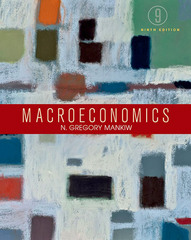Answered step by step
Verified Expert Solution
Question
1 Approved Answer
1) Jack has a utility function U(x1, x2) = 2.x1.x2 2 The price of x1 is 3$ and the price of x2 is $1 and
1) Jack has a utility function U(x1, x2) = 2.x1.x2 2 The price of x1 is 3$ and the price of x2 is $1 and Jack has an income of $90. A) How much of each goods will he demand? Quantity tax Let's now consider the case where the government imposes quantity tax which is a tax on the amount of a good consumed. B) A 1$ quantity tax (t) is placed on x1 so that now x1 costs $4 to Jack while his income and the price of x2 stay the same. How much of good x1 and x2 does he now demand? C) What will be the tax revenue of government? In other words, tax revenue is the amount equal to tax (t, which is 1$ here) times the quantity demanded by Jack (the answer of optimum x1 in part (B))? D) Government decided to give back all of the quantity tax revenue to Jack. In other words, his income rose by an amount equal to collected tax revenue (in part (C)). How much of good x1 and x2 does he demand now? (x1 still costs to Jack $4 but his income increased) E) Would Jack be as better off as he was before the quantity tax? (Calculate maximum utilities using best bundles without tax and with quantity tax [from part A and D], then compare utilities). F) Discuss which of the following conditions is better. No tax OR Imposing a quantity tax and giving back all the collected tax revenue to consumers. EXTRA Questions: (this part will not be graded, but I recommend you to solve) Income tax Let's now consider the case where government collects an income tax (is just tax on income, and does not depend consumed quantity) instead of quantity tax, and raises the same amount of revenue. Government imposes an income tax which is the same amount when it collects quantity tax to Jack. (In other words, Jacks income decreases in the amount of revenue collected with quantity tax in part (C)). G) How much of each good will he demand in this case? (The price of x1 is 3$ but his income decreased) H) In what type of tax would Jack be as better off? (Quantity tax or income tax) In other words, compare utilities obtain by bundles with quantity tax or income tax [from part B and G]. I) Discuss what type of tax is better for consumers. (In both type of tax, government collects the same amount of tax revenue so both types of tax is same for government) J) Draw Jack's best bundles in a graph. (Budget curves, best bundles and maximum utilities for all of 3 situations in one graph). Show in the graph, what type of tax is preferable. (this part will not be graded, and we will cover these topics after midterm) K) Calculate the consumer surplus in all of the 3 situations. (No tax, quantity tax and income tax). Discuss what type of tax causes the higher loss of consumer surplus. L) Draw and drive Jack's demand curve for good 1 by using different best bundles and prices? (Quantity of x1 when px1 is 3$ and quantity of x1 when px1 is 4 $) M) Calculate own price elasticity of demand for good 1. N) Calculate income elasticity of demand for good 1
Step by Step Solution
There are 3 Steps involved in it
Step: 1

Get Instant Access to Expert-Tailored Solutions
See step-by-step solutions with expert insights and AI powered tools for academic success
Step: 2

Step: 3

Ace Your Homework with AI
Get the answers you need in no time with our AI-driven, step-by-step assistance
Get Started


